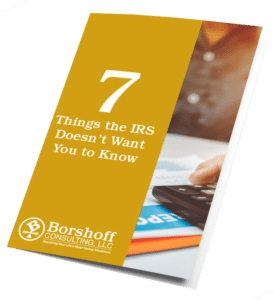The lines can get muddied from time to time, regarding personal and business expenses.
What you or someone at your company may consider to be a business expense, may not meet the standards or requirements of the IRS.
Regarding personal versus business expenses; the IRS states that you cannot deduct personal, living or family expenses.
The one exception would be something used partly for business and partly for personal purposes. In that case, you would divide the total cost between the business use and the personal use of the item or expense, with the personal use costs not being deductible.
According to the IRS, a business expense in order to be deductible must be both ordinary and necessary.
An ordinary expense qualifies as one that is common and accepted in your industry.
A necessary expense is one that is helpful and appropriate for your trade or business.
Some good news as the IRS states that an expense doesn’t have to be indispensable to be considered necessary.
It is vitally important for you to understand and know the differences between personal and business expense so that you will avoid any financial dangers with the IRS.
In this blog post, you’ll learn how to avoid the danger of confusing your personal and business expenses, as well as the differences between fully deductible and partially deductible business expenses.
Keep Your Money Separate
The Golden Rule: Keep your business money separate from your personal money.
Most experts; lawyers, consultants, accountants, and financial planners will all tell you that this is best.
Because, when you knowingly or unknowingly deduct personal expenses as business expenses, there is a high probability that you will be audited by the IRS!
Once you’ve opened that door you may be in danger of having to pay back taxes, and that could open the door for the IRS to take away your assets if you don’t have the resources to pay what you owe.
Avoid the danger of an audit by separating your receipts, one file for personal and the other file for business.
Setup Your Business Financials
Getting your EIN (Employer Identification Number), opening a Business Checking Account and getting a Business Credit Card will make it easier for you to avoid the danger of expense confusion.
Pay Yourself
It’s YOUR Business.
So, write yourself a check each month from your business checking account, then transfer that money to your personal checking account.
This is a great way to ensure you will always have enough money to pay your personal expenses while keeping your personal and business separate.
Maintain the necessary discipline to put yourself in an employer/employee mode.
Meaning, act as if you are working for someone else and they are handing you a monthly paycheck. It’s important to function this way to ensure you won’t be tempted to write yourself more than one check each month!
Fully Deductible Business Expenses
There’s good news in that the list of fully deductible business expenses is long. In alphabetical order they are….
- Accounting Fees
- Advertising Costs
- Association or Organization Dues
- Bank Fees and Charges
- Sales Expenses and Commissions
- Consultation Expenses or Charges
- Certain Continuing Education Expenses
- Contract Labor Costs
- Credit and Collection Fees
- Employee Benefit Programs
- Employee Gifts
- Equipment Rentals
- Insurance
- Internet Service Costs for domains, hosting or other Subscriptions
- Interest Paid
- Laundry Services and Dry Cleaning
- Legal Fees
- License Fees and Costs
- Maintenance and or Repairs
- Office Expenses and Supplies
- Profit-Sharing Plans
- Postage
- Printing Costs
- Professional Training and Development Costs
- Promotion Costs for promotions and items or Any Service Fees
- Rent
- Salaries and other forms of compensation
- Security Costs or Fees
- Software Costs
- Telecommunications Costs
- Travel Costs
- Utilities for your Business
Partially Deductible Business Expenses
Not all business expenses are fully deductible, so it’s important to know which ones fall into the “partially deductible” category.
- Client or Customer Gift Expenses – These are deductible up to $25 per person. So, for example, if you purchase a gift for a client that costs $150, you can deduct $25 of that as a partially deductible business expense.
- Meals and Entertainment Expenses – These are deductible up to 50% of the expense. The meal or entertainment experience must be business-related.
- Automobile and Transportation Expenses – You can deduct the portion of your automobile and transportation expenses for miles you drive for business purposes. It’s important to separate your personal mileage from your business mileage.
- Note: A reminder, that any travel (out of town for business) costs are fully deductible and located above in the fully deductible business expenses list.
Finally, the best way to avoid the danger of expense confusion to be disciplined and organization when it comes to your finances, both personal and business.
If you have more questions contact us today, by scheduling a free consultation.





